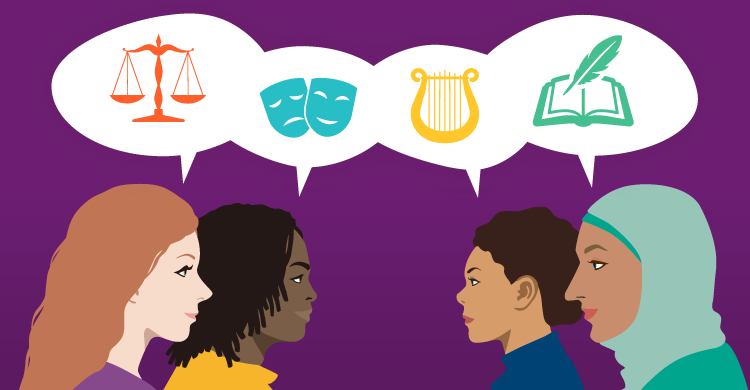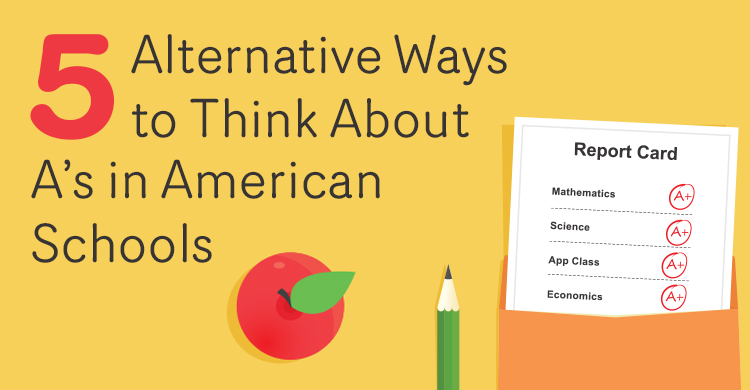This is the third post in a series on student-led, small-group discussions. To read the first post, see “Small Groups, Big Discussions.” The series explores the challenges to effective small-group discussions and how to address them. See all posts under Small Groups, Big Discussions.
In the book Deep Discourse: A Framework for Cultivating Student-Led Discussions, my co-author and I provide tools and resources for teachers to engage their students in rich academic talk. When we work with teachers, we often hear about their struggles with specific problems that bog down conversations and frustrate them until they are searching for answers.
A teacher once queried: “When my students discuss in small groups, one student does most of the talking, and others often don’t contribute. What can I do to encourage all students’ participation?”
Questions to ponder before solving this problem:
Having all students participate in discussion is like a puzzle with each piece important to view the whole picture. Addressing this challenge necessitates asking some initial questions to help solve the puzzle.
- Are students reading the right text that helps them increase their knowledge about the topic?
- Are the texts interesting, and do students have some choice in the topic and/or texts?
- Have students been explicitly taught how to contribute and add on to a point that has been made by another student?
- Are students receiving regular individual and group feedback about their group work and contributions?
1. Give Reading Choices for Discussions
Providing choice in reading increases accountability because students will have information others might not know or have read. For example, when students are asked to read about the Civil War, one offering might be to read articles about the advance of medicine that highlights medical technology, amputations, and transports. Another topic may include the review of primary-source documents including letters, newspapers, and census records of two communities—one North and one South—before, during, and after the war.
“What were women and children doing during the Civil War?” may be the topic for a different group of students to study. Biographies often provide interesting insights into the culture and perceptions of a period in history, making them a good topic selection. Some students may be interested in comparing the life of a Civil War soldier to an army soldier now. After the choices of these topics have been presented, students can form groups based on interest in an area of study.
2. Make Expectations Clear with Look For Criteria
Before students read and research their topics, the teacher could show a video of a small-group discussion where all members participate and then describe the “look for” criteria that will be used to assess their group discussions. The “look fors” for this assignment might be divided into two areas—content and group participation. Even though the goal is to enhance student participation in group discussion, it should not overshadow the content students need to learn. Therefore, it’s important to gather data on students’ demonstration of their group participation as well as knowledge of content. An example follows of a data sheet that could be described to students and later used to gather data when students engage in discussion.
| Look For | Notes |
Content
|
. |
Group Participation
|
3. Give Students a Chance to Talk in Small Groups
Once students are ready for discussion, they should begin in the group that studied the same topic. After they have had a healthy 20-to-30-minute discussion, new groups can be formed with membership comprised from all topics. This second discussion can occur on the same day or on a consecutive day, depending upon the schedule. The teacher’s role will be to gather notes of “look for” items that had been previously shared with the group. Later, the data collected can be used to provide individual and group feedback.
When students have some choice in what they read, they read more and are more willing to talk about their new knowledge (Gambrell & Marinak, 2009). It helps when they know that not everyone will have the same information, meaning their contributions matter. Additionally, the discussion about the topics bears new information, and students gain different perspectives other than what the teacher can offer. Teachers often report that their students also contribute more to whole-group questions when they are reading about topics that will be later discussed in small groups.
4. Establish Protocols for Discussion
Ms. Swanson, a fifth-grade teacher, used a protocol called First Thought, Last Thought to help her students understand that they should balance their speaking and listening time. After providing the content learning objective of having students discuss which character in their book selection has power, she describes the protocol in her short mini-lesson. Next, she has students form small groups to practice the protocol and discuss the characters. While students are meeting in small groups, Ms. Swanson observes and takes notes. She determines the next teaching point from their discussions and shares it when she provides feedback. Lastly, she has students complete a form to reflect on their experience of using the protocol. A video of Ms. Swanson teaching this protocol and the students’ application of the learning targets has been included below:
You may be thinking that this protocol doesn’t provide a natural flow of discussion; therefore, you may not see the value. Students need structures and supports to help them develop their group membership and communication skills. “Many students don’t come to school equipped with these skills and they don’t just develop naturally on their own” (Novak and Slattery, 2016, p. 155). Using protocols and other support mechanisms, students become consciously aware of their speaking and listening time. Without this type of support, it’s hard for them to move from being told they need to share speaking time more equally to applying this feedback in their group discussions.
5. Provide Talk Prompts to Foster Independence
The next step in moving from one student monopolizing the discussion to more equal representation is to offer talk prompts that can be used when this situation occurs. These prompts should be proposed for both the students who want to join the conversation as well as for the speaker who is doing most of the talking. Some suggestions are:
- “It’s important that we all get a chance to share our thoughts and ideas during our time together. Does someone who hasn’t had a chance to contribute have something to say about this idea?”
- “We agreed on a protocol for our group participation. One item is that all members should share time speaking and listening. How do you think we are doing in that regard?”
- “(Student’s name), you haven’t had a chance to contribute for a while. What are your thoughts on this topic?”
- “I can add to (student’s name)’s comment…”
- “Adding on to this topic, I read that…”
6. Try Individual Coaching and Other Strategies
Lastly, individual coaching with a student who is doing most of the talking will go a long way in improving speaking and listening skills. Coach the student to set a personal goal of facilitating the process of shared speaking time by suggesting strategies to bring others into the conversation. Using this strategy, the vocal student is still able to talk but is doing it differently. Often these students accept the challenge, which helps them improve their facilitation skills.
If you still feel like you need more help, Deep Discourse: A Framework for Cultivating Student-Led Discussions offers even more strategies for when a student monopolizes the discussion.
Professional Learning Community Opportunity:
I encourage you to try some of these strategies in your classroom. We have scheduled a follow-up, interactive web event about this topic on June 15 at 7:00 p.m. Eastern/4:00 p.m. Pacific. During the session, I will share examples in which students engage in a discussion demonstrating equal voice and provide targeted strategies and protocols that increase students’ communication skills, to ensure all students’ voices are heard. While I will lead this web event, it is an interactive session that calls on all attendees to participate. Come prepared with thought-provoking questions to explore during this session.
Participants can register for this event here.
Next time, I answer the question, “What can I do when students don’t read the assignment, making it difficult for them to contribute in their group discussion?” Look for the blog post on June 29!
Sandi Novak, an education consultant, has served as an assistant superintendent, principal, and teacher. With more than 35 years of experience in schools, Sandi provides professional development on a number of topics and initiatives, such as coaching principals and teacher leaders in developing strong literacy instruction, using data to monitor professional learning implementation, and developing school improvement plans focused on maximizing achievement for all students in literacy. Visit Sandi’s website, join her professional LinkedIn community, or send her a tweet @snovak91335.
References:
Gambrell, L. and Marinak, B. (2009). “Reading motivation: What the research says.” In Bridges, L. (2014) An educator’s guide to the joy and power of reading: A summary of research. New York: Scholastic, Inc.
Novak, S. & Slattery, C. (2016). Deep Discourse: A Framework for Cultivating Student-Led Discussions. Bloomington, IN: Solution Tree Press.
[author_bio id=”1117″]






